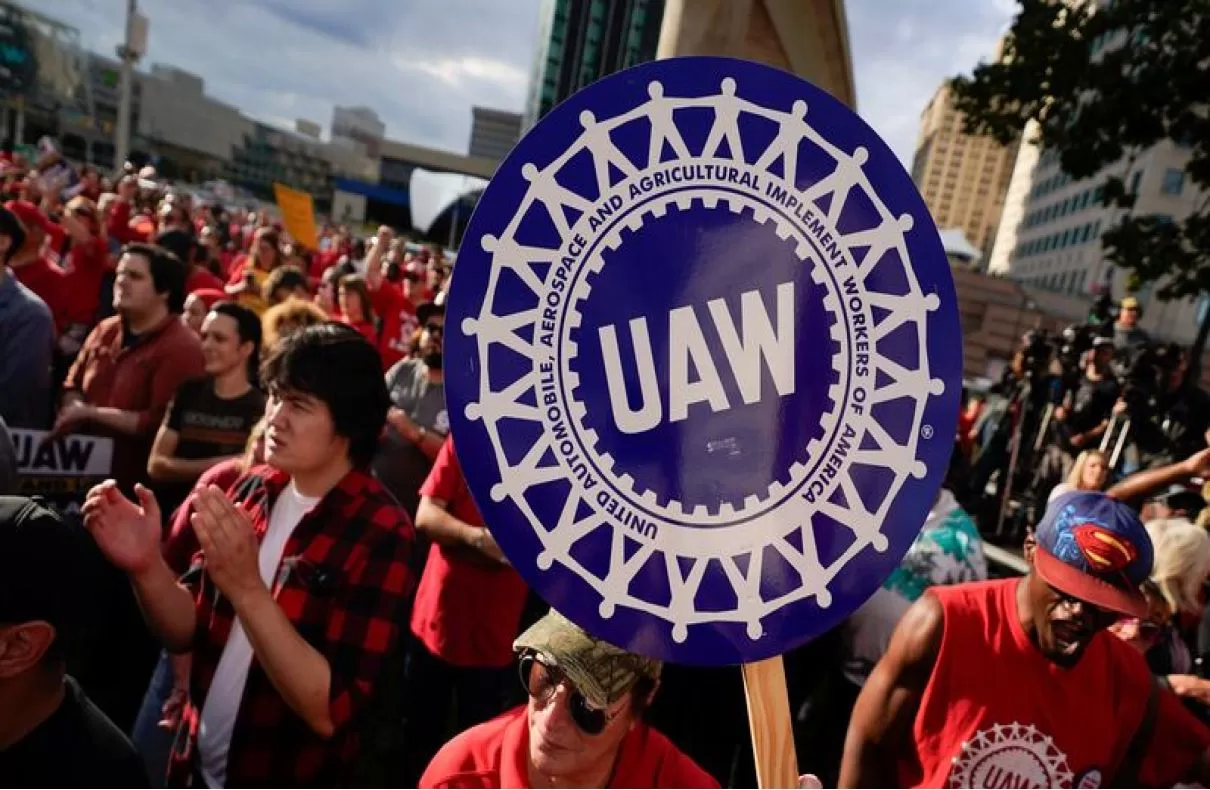The United Auto Workers (UAW) union has announced a drive to organize non-union automakers in the United States. The drive will target 13 automakers, including:
BMW, Honda, Hyundai, Lucid, Mazda, Mercedes-Benz, Nissan, Rivian, Subaru, Tesla, Toyota.
The drive will cover nearly 150,000 workers at factories in the south. The UAW has had little success in recruiting new members in this region.
The UAW’s goal is to expand its membership and reverse labor’s decades-long decline in the sector. The union recently negotiated record labor contracts with the Detroit Three car companies.
The UAW is collecting union authorization cards through a UAW-sanctioned website. The website criticizes corporate profits and executive compensation at non-unionized companies.
That means “thousands of non-union autoworkers are signing cards at the new UAW webpage UAW.org/join and are publicly organizing to join the UAW,” the union said in a news release. “To all the autoworkers out there working without the benefits of a union, now it’s your turn.”
The organizing drive will cover nearly 150,000 autoworkers across thirteen automakers, according to the release. To complement the effort, the union is launching at 3 p.m. Wednesday a 3-minute video on social media outlining the benefits of belonging to the union.
“Big 3 autoworkers at Ford, General Motors and Stellantis just won big raises, more job security and cost-of-living adjustments (COLA) for one simple reason: They’re organized,” Fain said in the video, which was shared with the Detroit Free Press before its public release.
In the video, Fain points out that electric vehicle makers Tesla, Rivian and Lucid have reported big profits in recent years and Toyota, Honda, Hyundai, Nissan, Subaru and Mazda — the Japanese and South Korean six — made $470 billion in profits combined over the past decade, “with more than 40% of their revenue coming from their North American operations.”
He added that the German Three: Volkswagen, BMW and Mercedes Benz have made $460 billion in profits in the past decade. He said workers deserve “a record cut of those record profits.”
As the Detroit Free Press has reported, the UAW conducted a targeted Stand-Up strike from Sept. 15 to Oct. 30 against the Detroit carmakers. The union won 4.5-year contracts at all three companies that included a 25% base wage increase over the life of the contract, a return of COLA, new plant investments and more.
At Subaru of Indiana Automotive in Lafayette, Indiana, about 6,000 people build the Ascent, Crosstrek, Legacy and Outback vehicles, according to www.Subaru-SIA.com website. Spokesman Craig Koven told the Free Press in an email, “Prior to recent industry developments, Subaru of Indiana Automotive has consistently demonstrated a commitment to proactively do the right thing for its associates.”
In a statement, Koven said, “As part of our semi-annual wage review conducted this time each year, current industry conditions were taken into consideration.
In January, we will implement increases at each step of our wage scales—including the largest production increase in company history. With this change. out top production wage will have increased seven times and more than 24% since 2019.”
He said the plant remains “the only known non-U.S. auto manufacturer to provide premium-free healthcare, as well as the sole auto manufacturer to make company-matching contributions to flexible spending accounts.”
On Wednesday, General Motors leaders said North American labor costs will increase by $1.5 billion this year compared with 2019 contracts due to the new UAW contract, but the automaker said it is looking across the company for ways to offset the increase.
CEO Mary Barra said the new contract with the UAW will add about $500 in cost to GM per vehicle in 2024 and about $575 per vehicle on average over the life of contract, Barra said.
Ford has not assigned a total dollar value to the negotiated UAW package, but CFO John Lawler did estimate an $850 to $900 added cost per unit in labor costs.
It is unclear what either cost increase at GM or Ford will mean for sticker prices. The UAW is referring to this movement as an “unprecedented effort to publicly organize the entire non-union auto sector at once.”
It marks a departure with past organizing efforts where the union went plant-by-plant. The union said this “new aggressive strategy is reflective of a new era of working- class leverage and workplace organizing.”


